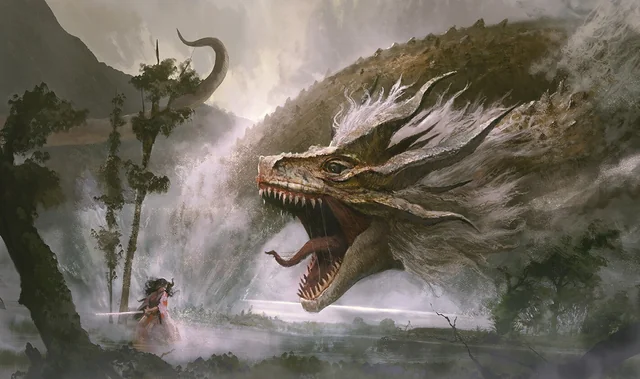kilkennybookcentre.com – Throughout history, cultures around the world have woven tales of monstrous creatures into their mythologies. These stories, often rich in symbolism and moral lessons, have captivated the human imagination for centuries. From the fearsome dragons of European folklore to the enigmatic creatures of Japanese mythology, these monsters are more than just creatures of terror; they are embodiments of deep-seated fears, desires, and the unknown. In this article, we explore the stories behind some of the most iconic monsters in mythology and the meanings they hold.
The Dragon: A Symbol of Power and Wisdom
Dragons are among the most universally recognized mythical creatures, appearing in various forms across different cultures. In European mythology, dragons are often depicted as fearsome beasts, hoarding treasure and breathing fire. They symbolize power, wisdom, and the forces of nature. The story of Saint George and the Dragon, for example, illustrates the battle between good and evil, with the dragon representing chaos and destruction.
In contrast, dragons in Chinese mythology are seen as benevolent creatures, symbols of power and good luck. They are associated with water and the heavens, and are believed to bring rain and fertility. The dragon’s role in Chinese New Year celebrations underscores its significance as a bringer of prosperity and good fortune.
The Minotaur: A Labyrinth of Desire and Punishment
The Minotaur, a creature with the body of a man and the head of a bull, is a central figure in Greek mythology. According to legend, the Minotaur was born from the union of Queen Pasiphaë of Crete and a bull, as a punishment from the gods. The creature was confined to a labyrinth, where it was fed on the flesh of young men and women sent from Athens as tribute. The story of the Minotaur and the labyrinth is a metaphor for the complexities of desire, punishment, and the human condition.
The Phoenix: Rebirth and Renewal
The phoenix, a bird that is reborn from its own ashes, is a symbol of immortality and renewal in various mythologies. In Egyptian mythology, the phoenix, or Bennu, is associated with the sun god Ra and represents the cycle of death and rebirth. In Chinese mythology, the phoenix is one of the Four Symbols, representing the emperor and the union of yin and yang. The phoenix’s ability to rise from the ashes makes it a powerful symbol of hope and resilience.
The Siren: The Allure of the Forbidden
Sirens, with their enchanting voices and deadly allure, are creatures from Greek mythology that lure sailors to their doom. They symbolize the dangers of giving in to temptation and the power of the senses over reason. The story of Odysseus and the Sirens illustrates the struggle between desire and self-control, with Odysseus ordering his men to tie him to the mast so he could hear the Sirens’ song without succumbing to their fatal charm.
Conclusion
Monsters in mythology are more than just creatures of fear; they are complex symbols that reflect the human experience. Through these stories, we explore our deepest fears, desires, and the mysteries of the world around us. Whether they represent the forces of nature, the battle between good and evil, or the complexities of the human psyche, these mythical creatures continue to captivate and inspire us. As we delve into the stories behind these monsters, we uncover the rich tapestry of human imagination and the enduring power of myth.

